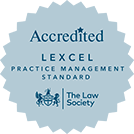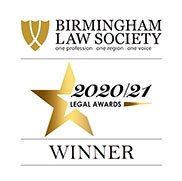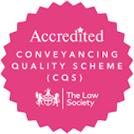
At Sydney Mitchell, we act for a lot of clubs. Many are sports and social clubs some of which have been in existence for over a hundred years and are still thriving, but of late we have had a number of instructions or enquiries from clubs looking to or considering changing to an alternative structure.
Why change?
Many clubs are unincorporated associations. Typically, such associations have members and a committee which manages the club on behalf of the members. Unlike, for example, a limited company, the club itself does not have a separate legal personality. This means that the club itself cannot own property and cannot enter into contracts. Often property will be held by trustees on trust and contracts will be entered into by members of the committee, for or on behalf of the association. This can and often does work fine, but it is not without potential problems or risks, particularly for the trustees and committee members. The risk is that, if something goes wrong, the trustees or committee members and sometimes the club members can be personally liable for debts or liabilities relating to the club. It is primarily for this reason that clubs which are unincorporated should consider adopting an alternative structure.
What are the alternatives?
Depending on the nature of the association, there are a number of alternative incorporated structures which could be adopted. This note does not attempt to give a detailed account of the structures or the possible advantages or disadvantages of each, but only to highlight very briefly some of the options. The focus is from the perspective primarily of sports and social clubs but structures which may be suitable for other types of association are also briefly mentioned.
Company limited by guarantee
- a company limited by guarantee is a registered company managed by directors and subject to company law involving directors’ duties and obligations to file annual accounts;
- the liability of members can be limited to a nominal amount;
- unlike a company limited by shares, the members do not hold shares in the company;
- the company can have “objects” to set out the purpose for which it is formed;
- the structure allows for considerable flexibility in relation to the rules or constitution of the company which are set out primarily in its articles of association;
- a company limited by guarantee is often a suitable structure for not for profit organisations such as sports and social clubs
Company limited by shares
- the liability of members is limited, but this structure is more commonly used and suitable for an organisation set up for commercial purposes and from which profits are intended to be extracted by shareholders.
Co-operative society
- a co-operative society is a society registered with the Financial Conduct Authority and subject to its rules for registration as such;
- is a society that does not generally carry on business with the object of making profits for the payment of dividends or the like;
- must be a bona fide co-operative meaning an "autonomous association of persons united voluntarily to meet their common economic, social and cultural needs and aspirations through a jointly owned and democratically controlled enterprise";
- the activities of the society should be run for the mutual benefit of the members so that the benefit the members obtain will stem principally from their participation in the business;
- control of the co-operative lies with all the members. Control should be equal and the principle of one member, one vote should apply;
- officers of the co-operative should be elected by members who may also vote to remove them;
- a co-operative society is a structure which could be suitable for some types of club.
Community benefit society
- a community benefit society is another type of society registered with the Financial Conduct Authority and subject to its rules for registration as such;
- the activities of the society must be conducted for the benefit of the community. It may be but does not have to be a charity, but the business must be run primarily for the benefit of people who are not members of the society. For this reason a community benefit society is unlikely to be suitable for a sports or social club.
Community Interest Company
- Community interest companies (CICs) are designed for social enterprises pursuing social objectives;
- they must pass the community interest test meaning that a reasonable person would consider that their activities are being carried on for the benefit of the community or a section of the community where a section of the community is defined as any group of individuals who share a common characteristic which distinguishes them from other members of the community and a reasonable person might consider that they constitute a section of the community;
- Because they must be set up to benefit the community rather than the members, a community interest company is unlikely to be the most suitable structure for a sports or social club.
Charity
- There are various types of charity including registered and unregistered charities and Charitable Incorporated Organisations;
- They may be suitable for certain associations but not for sports or social clubs which are intended to operate primarily for the benefit of members.
Considerations
Some of the factors which could be relevant and should be taken into account when considering what might be an appropriate alternative structure for an unincorporated association include:
- the activities carried out by the association and its purpose or objects;
- who it is intended to benefit;
- whether a right to distribute profits to members in any circumstances is required;
- the assets or property to be owned or used by the association;
- the size of the membership;
- the management of the association including who can and will be responsible for it;
- the turnover of the association;
- the risks attaching to the activities for example in relation to trading;
- the effect of provisions included in the current rules or constitution of the association;
- the wishes of the membership;
- restructuring costs;
- ongoing costs under the proposed new structure including in relation to any compliance obligations; and
- (importantly) tax considerations.
Process
The process for converting an existing unincorporated association will depend on the incorporated structure proposed to be adopted.
A starting point is to check how approval for the proposed change may be obtained under the current rules. Approvals are likely to need to be obtained and documented from both the committee and the members. It may be that other consents will also be required. In the case of conversion to a registered society the processes set out by the FCA will need to be followed and their approval obtained. In other cases, transfers including of property, assets and liabilities may be required.
Conclusion
There is good reason for an unincorporated association to consider adopting an incorporated structure and a number of factors to be taken into account in deciding whether this is appropriate and which structure may be most suitable. It will not always be necessary or desirable to change the structure. As an alternative, it might in some cases be worth considering reviewing the current rules of the association and whether risks might be mitigated by making appropriate amendments to these.
This article is intended for general information purposes only. It is not intended and should not be relied upon as providing legal advice. If advice is required in connection to any of the matters referred to in the article, please contact a member of the corporate team on 0808 166 8827.
Copyright Sydney Mitchell. September 2023.
 |
 |
 |
 |
 |
 |
|




